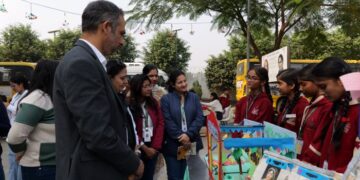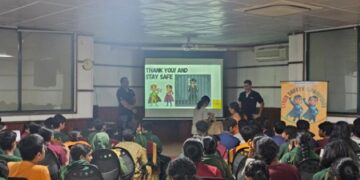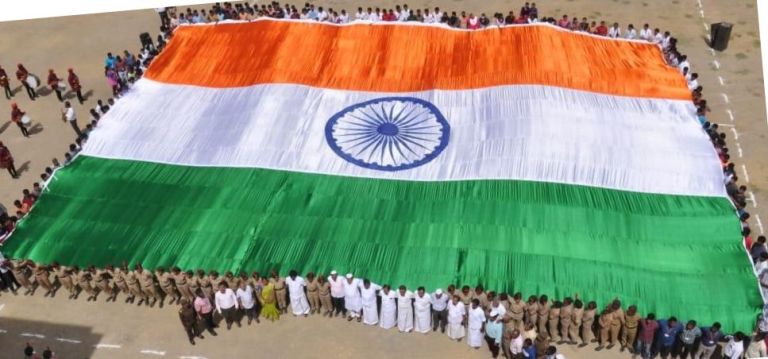Oxford University Press (OUP) has launched a series of art-integration training and capacity building workshops for teachers. An Art-Integration workshop, aimed at the teachers of grades 1 to 5, was organised in Delhi today, and attended by over 100 teachers.
Conducted by OUP expert and author of the Little Artists series, Anahita Lee, the workshop covered both areas of recommendation — Art Education (AE) built around the Elements of Art, as well as strategies and suggestions for Art Integrated Learning (AIL) across subjects. As the NEP points out, Art Integration must be built on a foundation of Art Education. Based on this premise, the workshop introduced the Elements of Art to the teachers and then shared strategies for integrating art across subject areas and grade levels.
Anahita Lee said, “Art allows for individual expression and, when lessons are designed to integrate art, children can choose how they want to express what they know of the world around them. Art is the meeting place of all subjects and through art, learning becomes a relevant, and engaging experience.”
Sumanta Datta, Managing Director, OUP India, commented, “The art integration workshops explore different pathways to integrate art in learning, enabling teachers to implement NEP recommendations in the classrooms. The approach and perspective will add new dimensions to make teaching more experiential and holistic.”
Why is art-integration central to learning and child development?
Art covers all domains of child development, and this makes art integration central to learning. Children develop motor skills as they use different techniques and tools. Using observation and imagination to create art deepens cognitive development. Creating art together and responding to art, build social and communication skills. The joy of creating develops self-expression and gives a sense of well-being.
Realising the importance of art integration for providing experiential learning, NEP 2020 & NCF-SE recommend the use of hands-on learning and arts. Integrating art in learning gives children the opportunity to expand their creativity and aesthetic sense. Through the activities they perform and the pictures they create, children build a sense of identity and an awareness of their immediate environment. They learn to appreciate art and respect one another’s creations. Art integration helps children develop keen observation and creative problem-solving skills.
While recognising the impact of arts education on other subject areas, it is also vital to recognise the importance of ‘art for art’s sake’. Art is among the earliest intra-human activities and is a part of all world cultures just like science, maths, technology, and other areas of learning. Children who gain mastery over an art form may find in it their passion or a career path – or just joy – for participating in art is indeed truly joyful.













